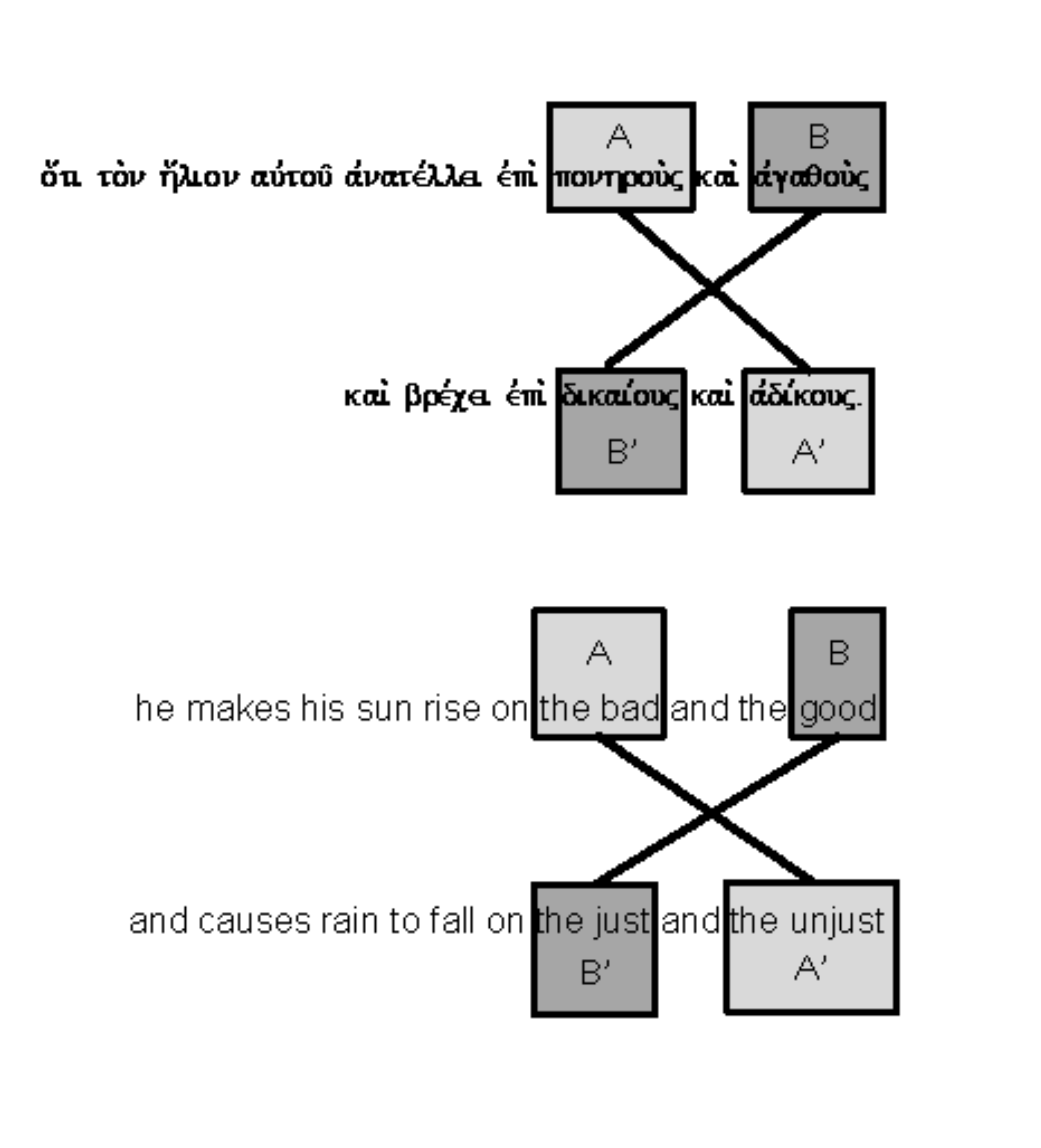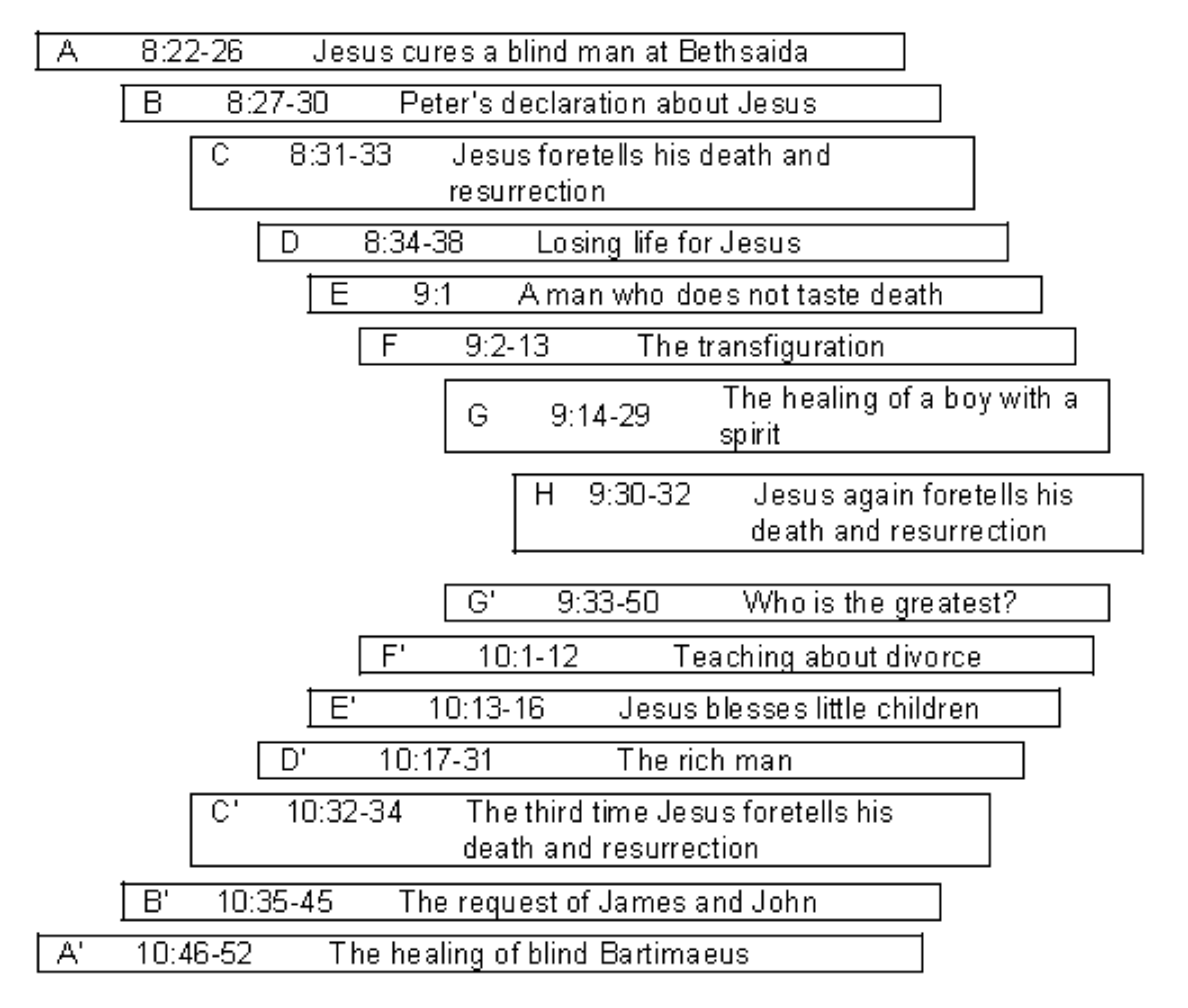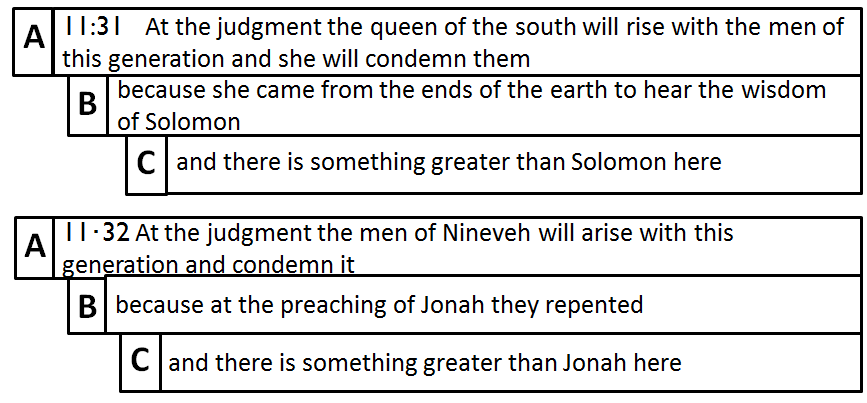
Figure 1. Example of a Simple Chiasmus (Matt. 5:45)


| A, A' | Healing the visually impaired |
| B, B' | Jesus is Messiah |
| C, C' | Foretelling death and resurrection |
| D, D' | Persecution and life |
| E, E' | Who enters into the kingdom of God |
| F, F' | Moses |
| G, G' | Evil spirit and child |
